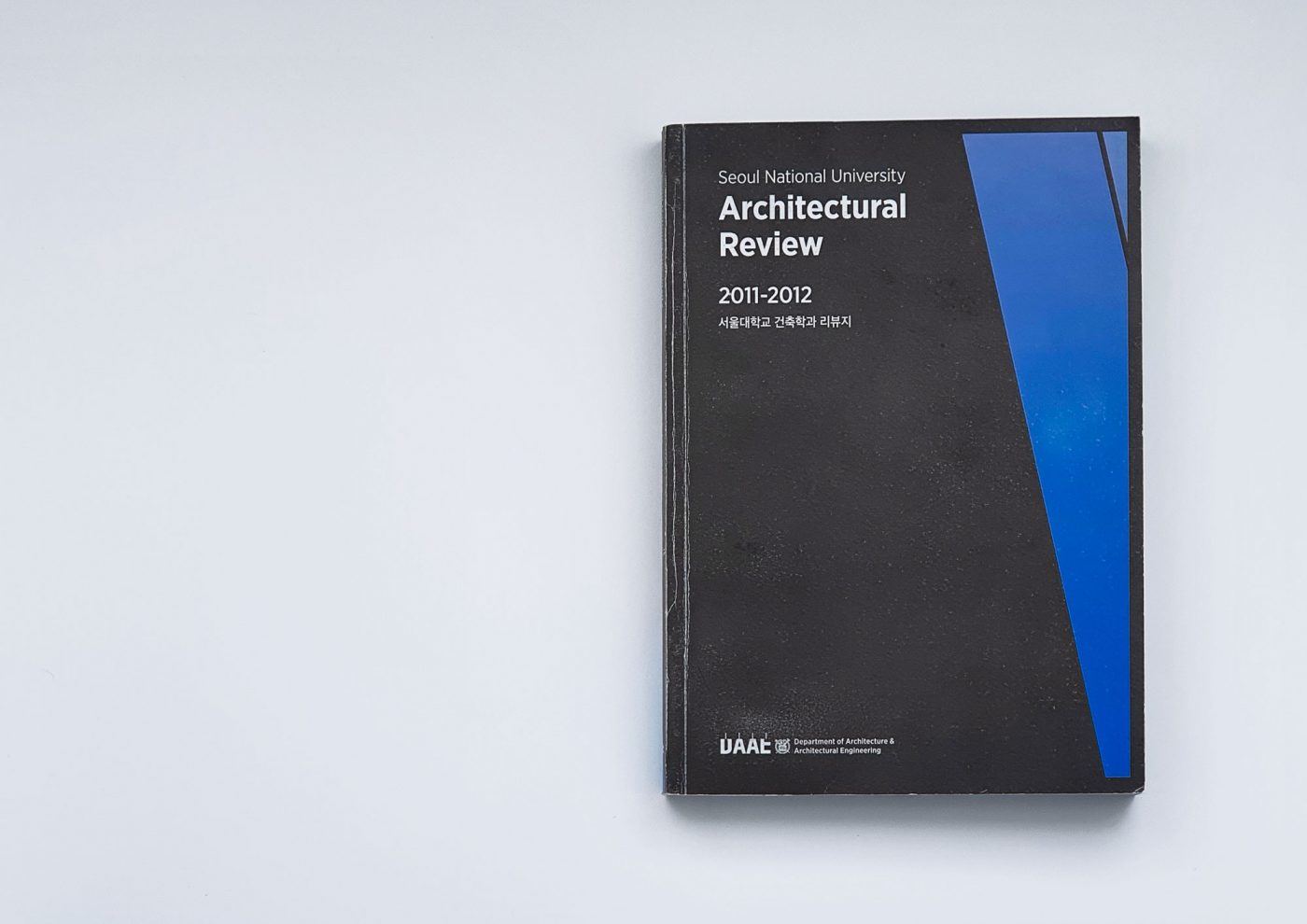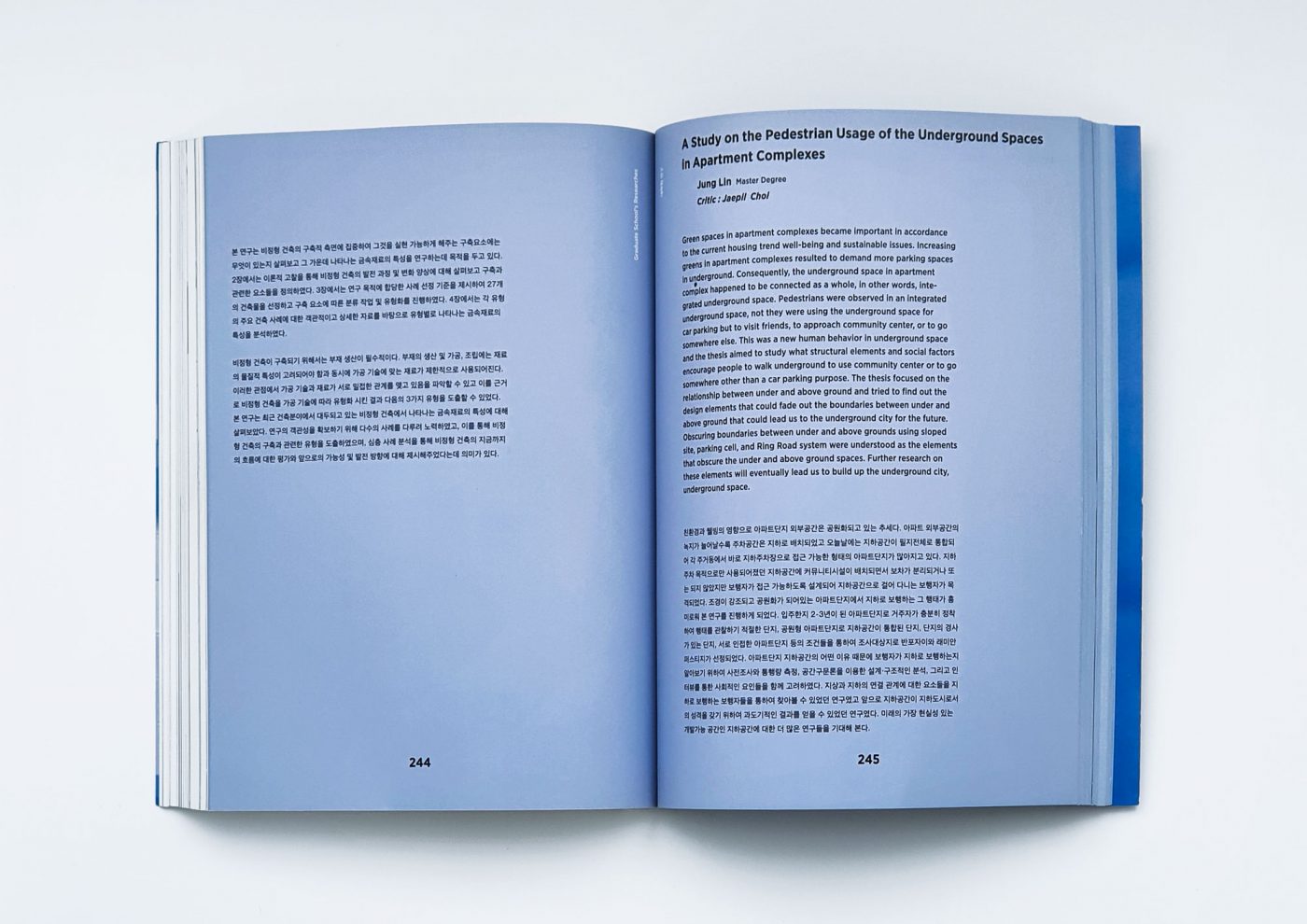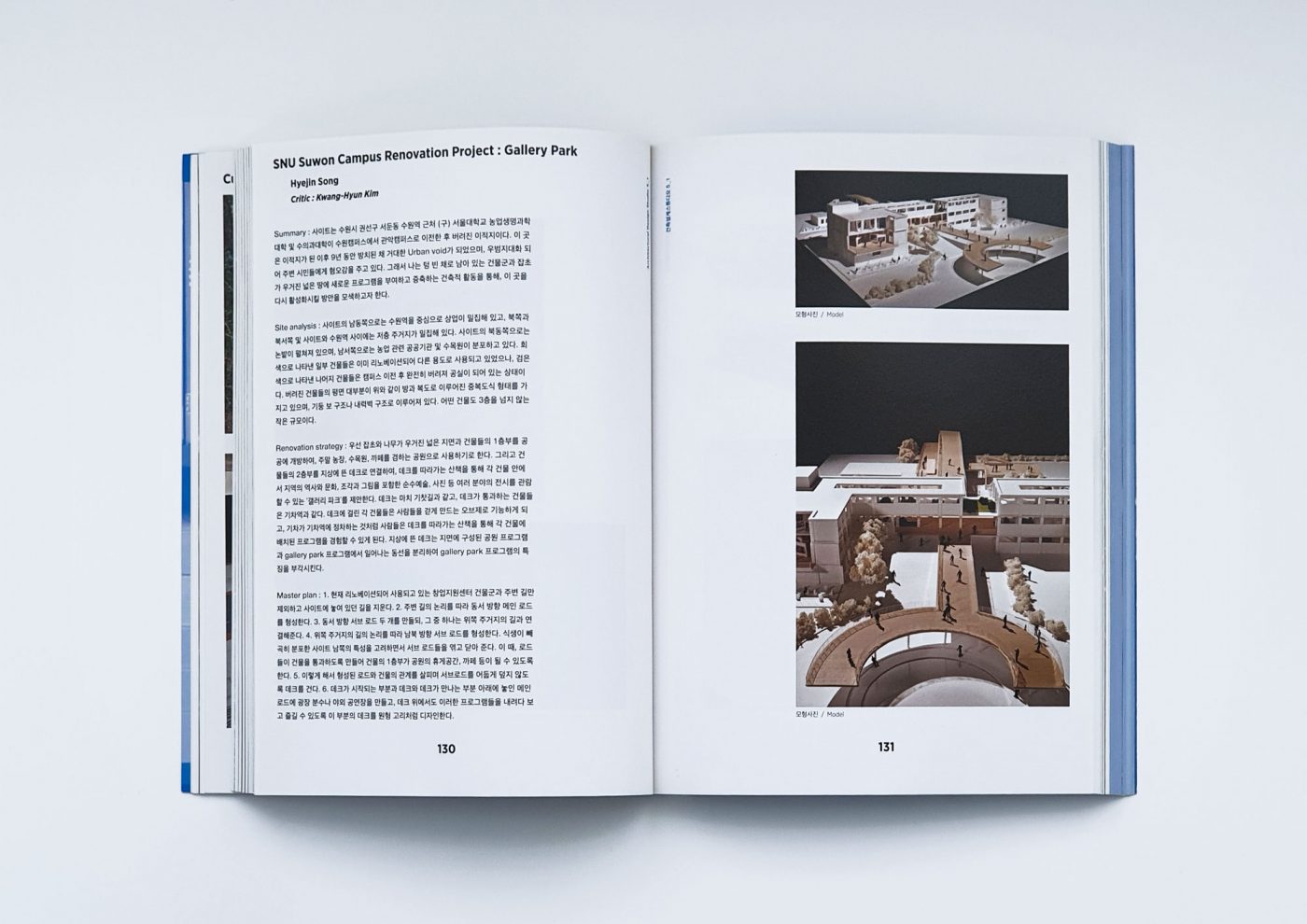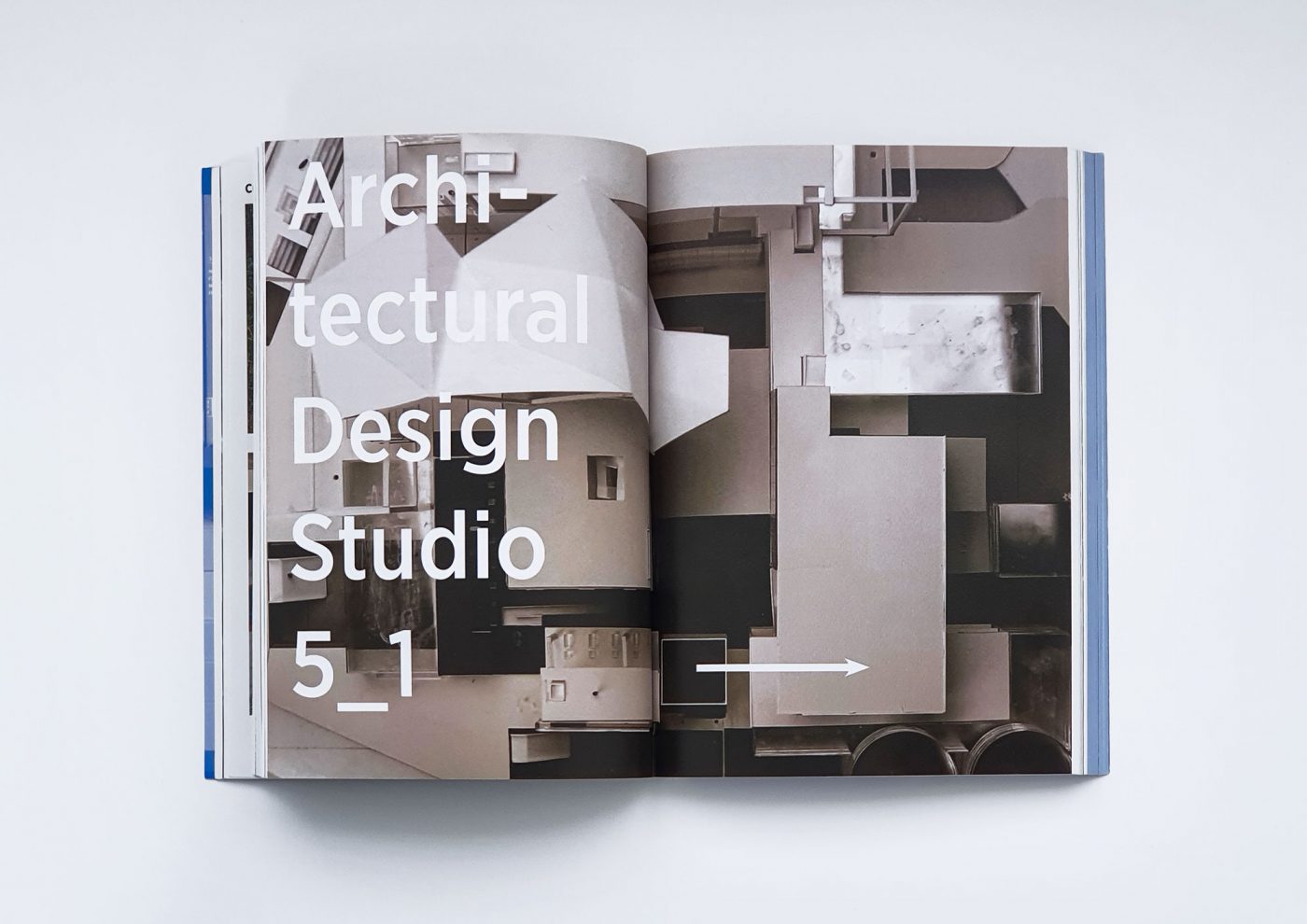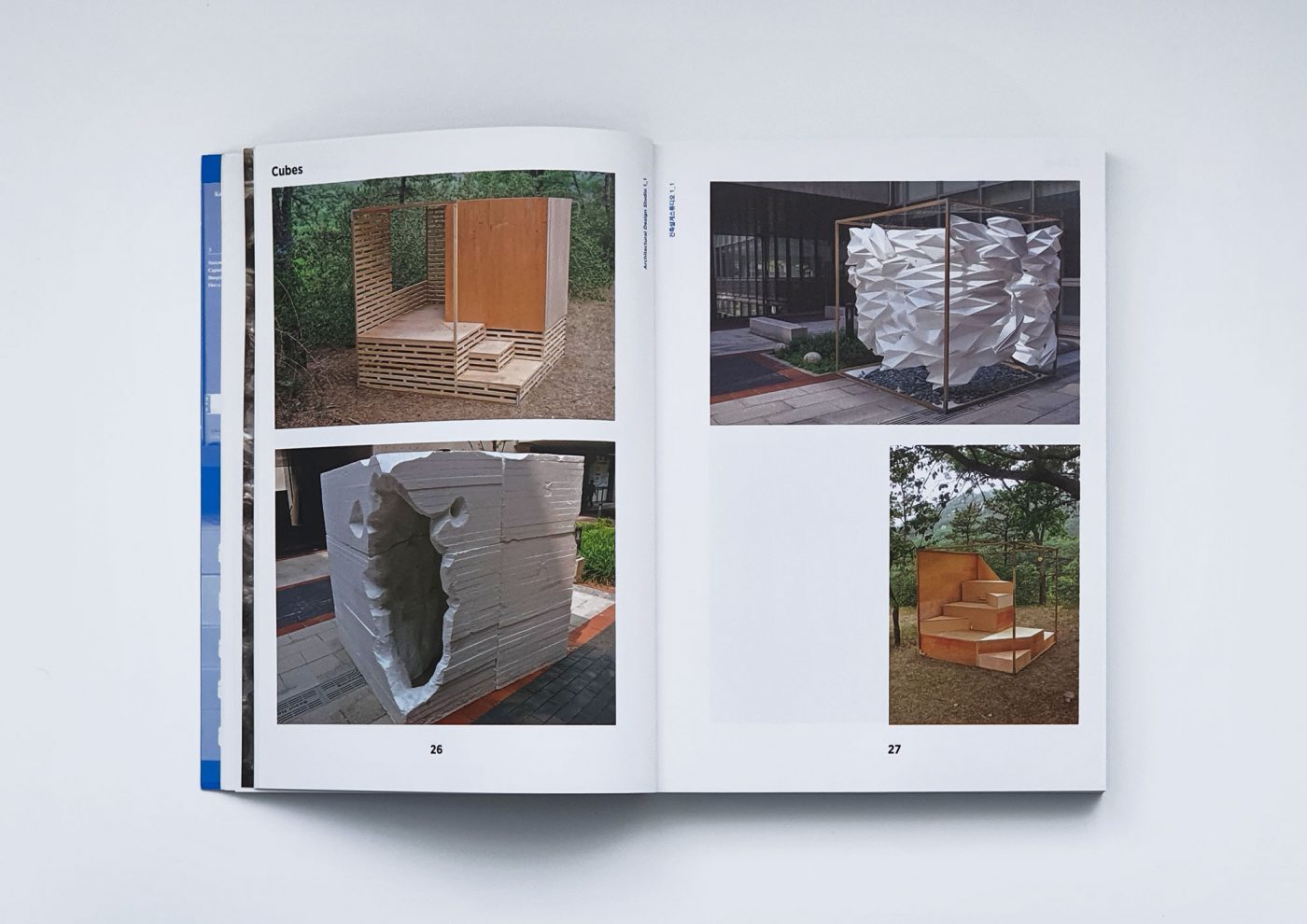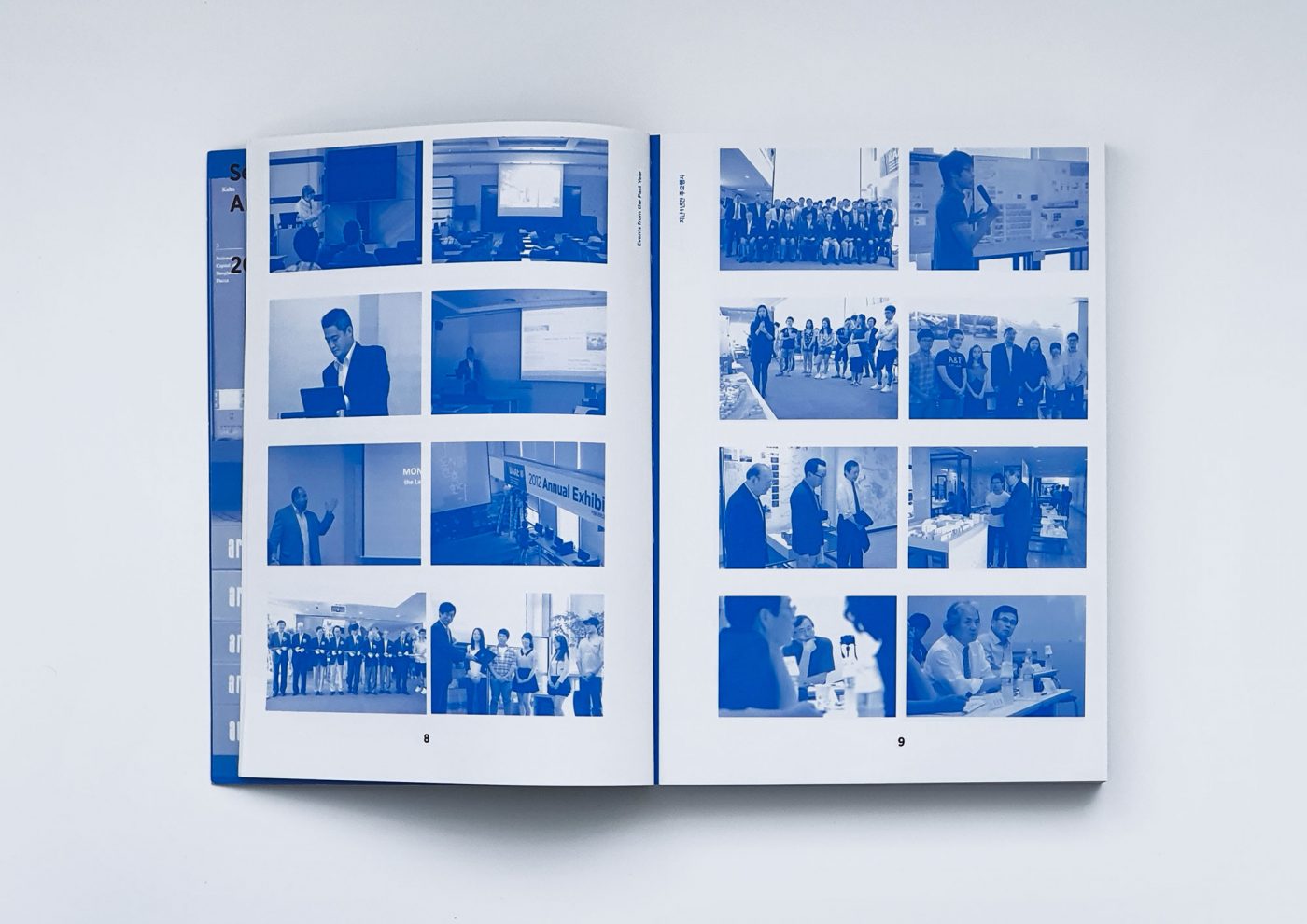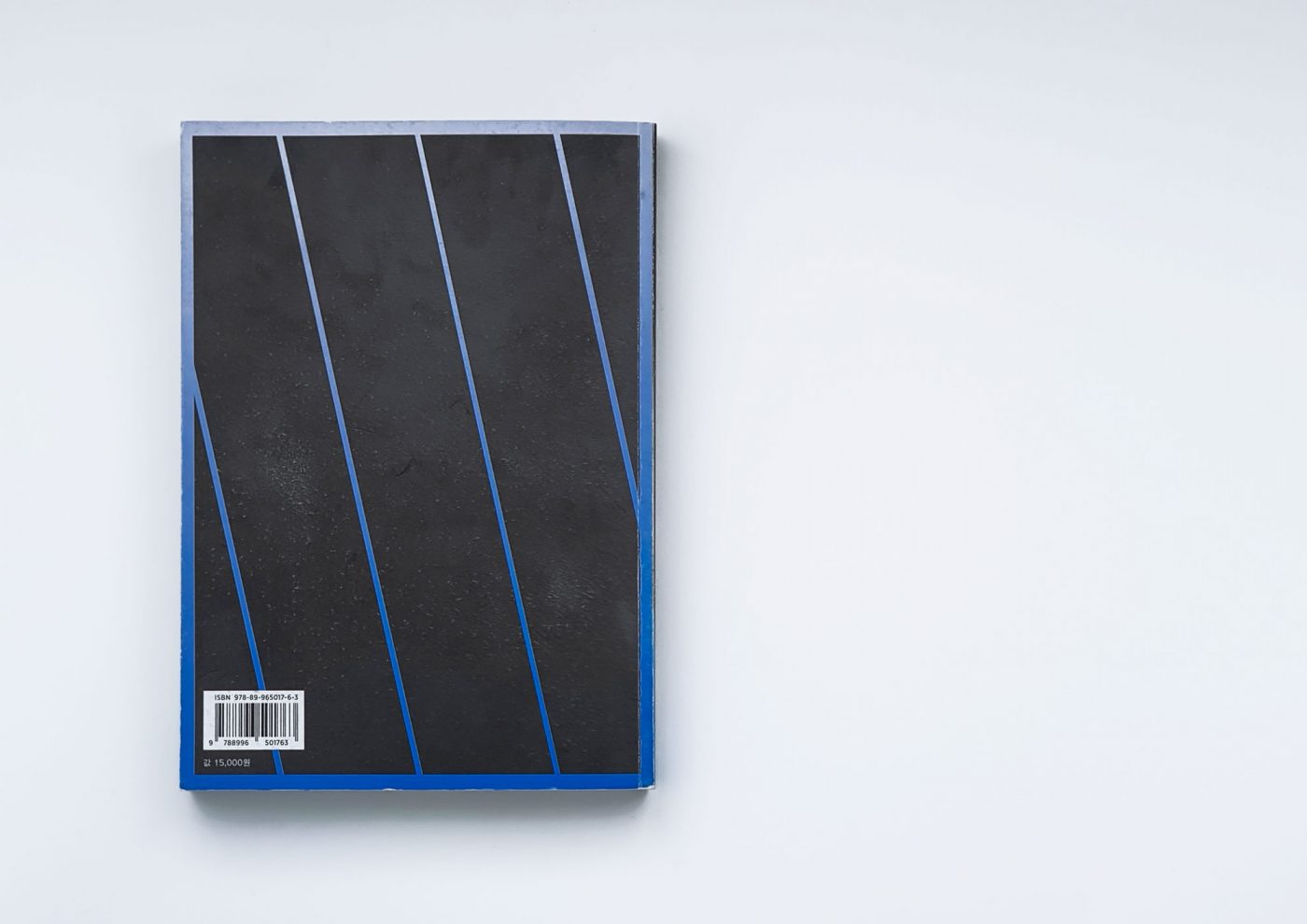SNU Architectural Review
2011 – 2012
2012, 1-1
건축설계스튜디오 1-1
세계를 어떻게 읽어내는가 : 신체, 사물
김승회, 김현주, 이민아, 이규상
Isaac Gray, 강승재, 이학, 강병권, 이영주, 김규리, 이건일, 김수정, 김우정, 김재은, 김정민, 곽준형, 김혜인, 김도연, 박광일, 이승헌, 박영신, 홍지현, 배중현, 조원섭, 배창현, 이재헌, 백남혁, 안연경, 송경은, 김지혁, 신유진, 하소영, 신윤정, 이대은, 최고은, 홍유경, 최윤하, 황문규
첫 스튜디오의 주제는 ‘세계를 어떻게 읽어내는가’이다. 세계를 독해의 대상인 텍스트로 설정하고 ‘신체’와 ‘사물’ , 이렇게 두 가지 텍스트에 대해 탐구한다.
TEXT 1 : 사물
우리의 일상생활에서 만나게 되는 사물들에 대한 섬세한 관찰과 이해를
바탕으로, 사물을 새롭게 해석하고 표현하는 훈련을 하는 과정이다. 사물을 피상적으로 이해하거나 관념적으로 파악하기보다는 사물이 가진 실재의 모습으로부터 과학적인 발견, 또는 시적인 감흥을 얻게 되기를 기대한다. 사물에 대한 관찰에서 비롯된 구체적인 경험을 건축가의 표현 수단인 도면과 모형을 통해 드러내고 표현한다.
Text 2: 신체
우리의 신체는 모든 경험의 출발점이다. 우리의 신체는 자아와 세계의 경계이며 세계를 경험하게 하는 촉수이자 정신과 영혼을 발현하는 공간이다. 신체에 대한 탐구는 신체와 건축적 장치의 상호관계를 탐구 하면서 다양한 시각과 관찰로 펼쳐진다. 신체에 대한 생물학적 이해를 넘어서 '몸’과 ‘세계’가 만들어내는 다양한 관계의 스펙트럼을 새롭게 발견하
고 창의적으로 표현한다. 1.8m 큐브를 캠퍼스 공간에 배치하고 대지의 상황에 반응하는 장치로서, 동시에 신체의 요구를 담는 장치로서 실제 스케일의 입체 공간을 제작한다.
The first studio focuses on "Understanding the World." The world is approached as texts that are to be read. The two texts are: THINGS and BODY.
TEXT 1: THING Through fine observation and analysis of everyday objects, students develop their skills to creatively reinterpret the object and express those reinterpretations. Rather than abstract understandings of the object, students are expected to obtain scientific discoveries and poetic inspirations from the exercise. They will then express their experiences of the object through architectural media such as drawings and models.
TEXT 2: BODY All experiences start from the human body. The human body is the boundary between the ego and the world, the tentacle of experiencing the world, the manifestation of the spirit. This exercise explores the relation between the human body and architectural settings. Students will discover and creatively express the broad spectrum of relation between the two, going beyond mere biological understandings of the human body. They will design a 1.8m cubic space in full-scale, located within the university campus, that interacts both with the site conditions and the human body.
2011, 1-2
건축설계스튜디오 1-2
도시탐구/ 이벤트공간
김승회, 김진균, 윤정현, 이민아
허경화, 박민정, 이상훈, 민세원
1_1 스튜디오에서는 사물과 신체 그리고 텍스트에 대한 독해를 통해 세계를 이해하고 그것을 건축적 언어로 소통하고 상상하는 실험을 했다면, 1_2 스튜디오에서는 우리 삶의 배경이 되는 도시를 탐색하고 그 속에서 장소를 만들어내는 작업을 하게 된다. ‘세계에 대한 이해’ 라는 주제는 계속되지만, 우리 삶의 구체적인 일상에 보다 가깝게 접근하면서 우리 도시가 갖고 있는 다양한 시간과 공간을 체험하고자 한다. 서울의 두 개의 지역을 탐구하고 도시와 건축이 만나는 장소에 작은 공간을 제안한다. 주변의 도시적 맥락을 고려하고 사용자의 다양한 이벤트를 담는 공간을 제안한다. 건축적인 제안과 더불어 각각의 지역에 대한 답사와 탐구의 기록을 담은 보고서를 작성한다. 첫 번째 프로젝트는 도시공간에 대한 답사에 중점을 두는 반면에 두 번째 프로젝트는 ‘건축구조1' 수업과 공동으로 진행하면서 구조방식을 고려한 건축공간을 제안하는데 중점을 둔다.
If Architectural Design Studio 1_1 was an architectural experiment of reading the text of the world, this studio is an exploration of the city, the scene of our daily lives, and creation of meaningful places within the city. While the theme "Understanding the World" is maintained, students will move on to the more concrete time and spaces of our lives. They will analyze two areas of Seoul, proposing small-scale spaces where the city and architecture encounter each other. The urban context of the sites, the users' various events are to be considered. Apart from the architectural proposals, students are asked to dpcument their visits and analysis of the sites. The first proaect focuses on responding to the site, while the-second project focuses on, proposing a structurally soumd architectural space, being, run jointly with the lecture course 'Building Structures 1.'
2012, 2-1
건축설계스튜디오 2-1
a guest house / a residence for two artists
최두남, 피터 페레토, 서을호
정연중, 이신후, 민지희
이 과목은 공간을 설계함에 있어 주어진 환경 및 대지를 면밀히 관찰, 분석하고 공간구성의 틀을 만드는 기본적인 건축개념들의 학습을 통하여 사용자의 기능에 대한 요구를 만족시키며 개념이 내재된 조형을 이용하여 건출을 구축하는 방법을 습득하는 것을 목표로 한다. 건물을 포함한 전체 대지를 설계함으로써 대지분석에 대한 중요성을 강조하고 설계 진행과정에서 설계의도를 효율적으로 표현할 수 있는 설득력과 시각적 표현기법의 숙달을 꾀하며 자료 분석을 통한 사용자, 기능 및 프로그램에 대한 철저한 이해가 이루어질 수 있도록 한다. 이번 학기에 학생들은 르 코르뷔지에가 설계한 Villa Shodan의 게스트 하우스, 삼청동 지역 두 예술가를 위한 주택 등의 프로젝트를 수행한다. 이를 통해 대지의 일부분으로서 기존 건축물, 개성이 뚜렷한 건축주의 욕구, 지역적 특색 등에 대응하게 된다.
The objective of this course is to help students to learn the process of design by encouraging them to get familiarized with the basic architectural concepts. Students are asked to carefully analyze the given context and the site, which are important part of design considerations, in the process of establishing architectural concepts that would reflect architect's aesthetic vision. Emphasis will be given on having students engaged in total design process in which students would learn to address such issues as site planning, program analysis and building design. Here, students design a guest house for Villa Shodan by Le Corbusier, and residence for two artists in the Samcheong-dong area in Seoul. Through these projects, they are expected to respond to the existing building as a part of the site, different clients in the artists', and the locality of the places.
2011, 2-2
건축설계스튜디오 2-2
building materials and structural systems.
최두남, 피터 페레토, 서을호
유소라, 임하림, 차해란
이 과목은 설계를 진행함에 있어 공간 창출과 완성에 필요한 기술적인 측면에 대한 비중 있는 탐구를 통하여 재료에 대한 이해와 물성에 대한 감각을 높이며 건물이 구축되어지는 시공과정과 건물 구조 시스템에 대한 포괄적인 이해와 탐구가 이루어지도록 한다. 적절한 재료선택에 필요한 기본적인 건축적, 기술적인 지식을 바탕으로 다양한 구조시스템의 가능성 및 잠재성에 대한 개괄적인 이해가 이루어질 수 있도록 한다.
The objective of this course is to emphasize the importance of the technical aspect of architectural design by having students pay attention to building materials and structural systems. Students will have opportunities not only to examine the potential design possibilities of various structural systems but also to develop tectonic awareness of building materials.
2012, 3-1
건축설계스튜디오 3-1
도서관
김석현, 김석원, 이종수
소유정, 노동완, 황나민, 이형빈
단순 사용자 건물 혹은 단일 개체 설계를 습득한 학생에게 다중 사용자/다중개체 설계를 다룰 수 있도록 연습한다. 구조는 조적조나 노출콘크리트 벽식 구조에서 30mX30m범위에 6mX6m 라멘 그리드 반복구조로 확장하여, 중규모 공간에서 다양한 사용자가 이용하는 공간을 설계한다. 공공 홀과 책 저장 물류처리 공간이 갖추어진 도서관 프로그램에 대해 숙지하도록 한다. 특히 다중 이용 공간에서 새로이 유의해야 할 무장애시설 강사 초빙 강연을 개최하고 법규검토와 설계적용 연습을 실시한다. 기초 공간 연습 초반 1개월 동안은 공동스튜디오로 운영되며 그 후 3개의 스튜디오로 나누어 진행한다.
The 3rd year design studio focuses on moving on from single-use buildings to multiple-use buildings. Therefore, a repetitive 30 x 30m column-and-beam structure is introduced, with building programs for various users. Students will practice this concept through the design of a library, a synthesis of a public hall, book storage, and logistics. As a public building, the understanding of concepts such as 'barrier-free design' and 'universal access' is also very important. For the first month, studios are run jointly, focusing on spatial design, which are individually developed over the next three months.
2011, 3-2
건축설계스튜디오 3-2
공연장 : 특수전용공간 / 복합구조
김현철, 김석원, 이종수
윤여준, 홍다솔, 김상, 조지현
직전 학기에 연습한 다중이용 공간 설계에서 특수 전용 공간 설계를 다룬다. 구조는 단순 구조에서 복합구조로 확대 적용하도록 하고 중대규모의 다양한 사용자가 동시에 이용하는 관리시설과 특수설비 무대시설을 갖추고 관람객, 출연자, 관리자로 구성된 3원동선 체계를 다룬다. 이 과제에서는 도시꼴 연습을 통하여 다양한 건물군간 관계 짓기/건물군과 도시 콘텍스트사이 관계짓기 연습을 하고 배치계획과 특정한 형태를 통합하는 형태 디자인 능력을 기른다. 기능상으로 특수 건축물이 갖는 프로그램을 대해 숙지하고 다중이용시설에 적절한 무장애시설/ 안전 및 방재시설에 관해 이론적, 실천적으로 연습한다.
In this design studio, students practice the design of spaces for specialized uses. In doing so, they will work on performing theaters where a complex building structure is introduced having multiple layers of circulations: the audience, the actors, and the staff. Furthermore, site planning and form planning in response to the building clusters and urban context are explored. While the main focus is to understand the spatial program of a specialized use building,the concepts and implementations of 'barrier-free design,'universal access,' and 'fire safety' are also explored.
2012, 4-1
건축설계스튜디오 4-1
섬 재생하기 : 안좌도
김진균, 김성우, 피터 페레토
윤여준, 신재희, David Kriechmair, 이주식
한국은 수많은 작은 섬들로 둘러쌓여 있는 반도국가이다. 이 섬들은 수세기 동안 어업과 지역적 사업들 통해 유지되어 왔지만, 한국인 점점 빠른 현대화를 보임에 따라 섬들은 점점 쇠퇴하여 왔다. 그리하여 오늘날 한국의 이런 작은 섬들은 주민들의 수는 줄어들고 소외괴고 있으며, 극단적으로는 잊혀지고 있다. 이번 학기 프로젝트는 이런 섬 중에 한 곳인 한국의 남서쪽에 위치한 안좌도를 되살리는 것이다. 각 스튜디오는 단일 건물이나 도시적 블락에 초점을 맞추기보다는 섬 전체를 재건하기 위한 리모델링과 재활용의 주제에 대하여 근본적인 접근을 할 것이다.
Resuscitating a Dying Island / Korea is a peninsula surrounded by many small islands. These islands for centuries have survived on fishing and other local trades, yet following Korea's rapid modernization, the communities that populate these islands have been slowly declining, to the extent that today there is a risk that they will become uninhabitea, marginalized and ultimately forgotten. This semester's project will be to revive one of these islands, specifically the island of Anjwa off the south western coast of Korea. The studio takes a radical approach to the theme of re-modeling and r.e-use, rather than focusing on a single building or city block we will remodel an entire island.
2011, 4-2
건축설계스튜디오 4-2
수직성
피터 페레토, 김태만, 조원준
Marina Kindelan, 박지형, 김강현, 이병준, 박승호, 서유정, 권상진
수직성 / 웅거스 책 Morphologie : City Metaphors에 의해 영감을 받은 수직성의 개념을 탐구함으로써 시작한 스튜디오는 우리 자신의 수직적인 삶에 의한 우리 스스로의 것의 생산을 시작하였다. 그룹작업으로 이루어진 학생들의 작품은 개념과 이미지, 아이디어를 확장한 참조물들을 탐구하는 것에서 물음을 구했다. 대지 용산역 차고지는 도심 한가운데 비워진 대지이다. 본래 이 대지는 서울성벽 바깥쪽에 위치하던 대지로 서울의 중요한 인프라스트럭쳐인 철도역사, 미군기지, 한강 세 곳을 전략적으로 연결하였다. 이 세가지 요소는 미군기지가 이전함과 동시에 세계에서 가장 큰 공원을 만들려는 변화를 겪게 된다. 현재 대지의 가운데에는 지하철과 지역적 혹은 국지적으로 연결되어 있는 철도의 거대한 교통요충지이며, 동시에 쇼핑과 엔터테인먼트적 경험을 모두 할 수 있는 쇼핑몰이 위치하고 있다.
Verticality / The studio started by looking at the notion of verticality, inspired by Oswald Mathias Ungers book: Morphologie: City Metaphors, and we embarked on producing our own account of Vertical living. Students working in groups were asked to explore concepts, images and references that expanded on the idea. Site The Yongsang Rail Depot site is huge vacant site in the heart of the city. It's a site that originally fell outside Seoul's city walls and is strategically connected to three important infrastructural nodes: the Rail link, the US military base and the Han river. All three elements will undergo major changes in the future, lead by the US army vacating their original spot to make way to one of the biggest public parks in the world. At the centre of the site today lies the huge I-Mall, which is both a mall and a major transport interchange, with subway, national and regional rail connections, as well as offering a comprehensive commercial and entertainment experience.
2012, 5-1
건축설계스튜디오 5-1
졸업설계
김광현, 김현철, 최두남, 신승수, 안우성
박은정, 박지형, 송혜진, 안석민, 이명기, 이병준, 이진원, 최원아, 최준호, 황민, 이상욱, 고유림, 조홍재, 권상진, 박승호, 서유정, 진민주, 최한솔, 방누리, 백도현, 서명수, 심규대, 이계현, 이규빈, 전홍철
졸업설계는 자신의 건축적 사고를 독자적으로 발전시키고, 이를 현실의 조건 위에서 구체적으로 실현하기 위한 작업이다. 이를 위해 수강지는 각자 현대도시를 분석하고그 현대도시가 우리의 일상생활에 어떤 경로를 거쳐 건축공간과 형태에 영향을 미치는지를 검토한다. 그리고 도시의 일각에 서게 될 대지에 주목하면서 대지에 얽힌 다양한 사람의 흐름, 물리적인 문맥, 자연환경에 대한 고려를 어떻게 설정하고 있는지를 건축적 어휘를 사용하여 구체화한다. 또한 자신이 설정한 프로그램을 논리적으로 해석하는 능력을 발전시켜 건축가라는 직업인으로서 앞으로 지속해야 할 자신의 가치를 발견하도록 한다. 더욱이 졸업설계에서는 건축디자인의 기초요소만이 아니라, 구조설비 등 기본적인 엔지니어링의 조건도 고려한다.
The graduatioon exhibition is a task to develop students' architectural thoughts in their own way and to realize the thoughts specifically in actual conditions. Students analyze modern cities and investigate how those cities affect to architectural spaces and shapes through what channel in our daily life. Furthermore, students embody their consideration for human flow, physical context and natural environment attending sites as the tip of the city. Students should develop their ability to analyze logically the program set up by themselves. That is the way to find their values that should be kept up as a professional architecture. The graduation exhibition reflects basic engineering conditions - structures, facilities and so on - as well as basic components of architectural design.
2011, 5-2
건축설계스튜디오 5-2
디자인 프로세스 : 기획에서 디자인, 빌딩시스템, 디테일에 이르기까지
김승회, 안우성, 이규상
김예리, 김형주, 박대준, 허지은
5학년 2학기 스튜디오의 전 과정을 통해 실제적인 설계 프로세스를 수행한다. 기획단계에서부터 디자인, 빌딩시스템, 디테일에 이르는 전체적인 디자인 프로세스를 진행하면서 각 디자인 단계에 따른 건축적 개념의 전개 방식과 디자인 과정을 익힌다. 종합적인 설계의 과정을 이해하고 프로젝트의 각 단계별 목표에 따라 경과물을 완성한다.
The students will perform practical design process via the whole program of this studio. Starting with working out a scheme, the students will go through design development, building system and details step by step. Experiencing all this steps, the students will acquire how to deal with the architectural concept and process of design, Performing total process of planning, the students will complete the architectural project achieving the aim of each steps.
건축공학스튜디오
시공분야: 물류시스템, 방재 대책, 주차 시스템 , 자연과 어우러진 기술 환경 분야 : 건물의 친환경적 리모델링, 구조분야에서는 다리위의 호텔, 물위의 구조물
이현수, 이철호, 여명석, 박문서
이상엽, 윤지환, 김성범, 김시현, 하동훈, 오정호, 최영민, 이채호, 이상명, 남다름, Taeha Leigh, 백지민, 서민지, 박영민, 전상윤, 김규수, 박선호, 권구현, 임용성, 이강록, 이미연, 노주옥, 문주용, 이성용, Ahsir Cho, 연수현, 소현준, 정호철, 원세훈, 안형진, 윤수인
졸업 작품 공학전은 건축공학에 대한 지식을 바탕으로 학생들의 전공에 대한 이해와 창의적인 생각을 도모하기 위한 자리이다. 구조, 환경, 시공 총 3개의 부분으로 나누어져 각 분야마다 창의적이고 독창적인 주제를 이용한 작품들이 출품되었다. 특히 올해는 자재 관리, 방재 대책, 주차 시스템, 리모델링 등의 소재를 이용하여 건축 공학을 다양한 시각을 통해서 바라보려는 노력이 있었으며, 서로 다른 구조물들이 어우러진 작품을 통해 건축공학에 대한 창의적인 생각과 혁신적인 방법을 제시해고자 했다 이러한 노력들은 건축 공학이 성장할 수 있는 새로운 동력이 될 것이며 다른 산업의 발전을 이루는데 기여할 것이다. 시공분야에서는 물류시스템 연구, 방재 대책 연구, 주차 시스템 개발, 자연과 어우러진 기술 등을 선보였다. 환경 분야에서는 건물 리모델링의 친환경적 접근 방법을 제시하고, 구조분야에서는 다리위의 호텔, 물위의 구조물 등을 이용한 새로운 구조물에 대한 생각들을 공유하고자 하였다.
The Architectural Engineering Studio is the class to promote the understanding and creative thinking of students for the knowledge on the Architectural Engineering. It presents various topics in three main parts: Structure, Environment and Management. In 2012, students were especially trained to reconstruct the idea about the Architectural Engineering with a variety of theme, for instance, Material management, Disaster prevention, Parking system and Re-modeling. These experiences will give chance to the creative thought and innovative method. These efforts will encourage the development of architecture engineering and relavant industry. In the Construction Technology, students show the works related in the various fields including Logistic system, Fire precaution system, Home Parking System, Architecture in Nature, As for the Environmental engineering, students can proceed the research with the environment-friendly methodology. In Structure field, students share the idea about the advanced concept with the Floating structure, Hotel over bridge.
건축재료계획
재료와 물성
김승회
강재혁, 문주희, 고승훈, 소유정, 김홍일, 이정한, 선지혜, 신은혜, 유소라, 장재윤, 이민홍, 노동완, 이세진, 신현희, 임지윤, 허영현, 임하린, 박성연, 황남인, 이현우, 황희진, 차혜란
건축가에게 있어서 재료는 건축의 요소로 이해되는 것이 아니라 건축 그 자체이다. 그러므로 재료는 설계의 마지막 단계에서 결정되는 것이 아니라 첫 단계에서부터 대지와 프로그램과 함께 총체적으로 다루어져야 한다. 재료계획의 수업을 통해서 재료의 성질과 그 사용 방식에 대해 이해한다. 그 이해를 바탕으로 재료와 관련된 건축디테일을 탐구하고 실제 건축공간과 재료의 관계를 살퍼본다. 한편으로 재료의 본질과 개념에 대한 숙고를 바탕으로 새로운 물질성에 대한 탐구가 이루어진다. 목재와 유리, 금속등 구체적은 재료로 오브제를 만드는 과정을 통해 재료와 물질에 대한 속성과 물성에 대한 독창적인 해석과 창의적인 표현을 실험한다. 이러한 재료에 대한 이해를 바탕으로 그것이 실제로 어떻게 건축물을 통해 구현되는지 구체적인 사례를 통해 탐색하고 재료에 관한 총체적인 이해와 전망을 습득한다.
For the architect, the material is not considered as the element of architecture; the material is architecture itself. So, the material has not to be decided at the last process, but handled at the beginning with site and program. Through this course, it would be studied that character of material and its usage, architectural detail that material needs, researching of new materiality. Understand the nature of material and usage of it. To aware of it, explore architectural details related to the material. Consider the relationship between architectural space in real scale and the materials. At the same time, research on physical make-up as new stood on the consideration about an essence and concepts of material. By making an object with specific materials like wood, glass, metal etc. experiment unique interpretation and creative presentation. Search the case how architecture is embodied, by understanding material, and learn the prospect and general understanding.
대학원
건축설계스튜디오
공원와 도시의 경계면과 접합방식
최두남, 김현철
이해림, Xin Wang
도시는 삶의 축적과 소멸의 반복 사이에서 이루어지는 인간의 활동무대로서 도시인들 삶의 궤적은 물리적인(Physical) 또한 형이상학적(Metaphysical)인 도시의 실체에 의하여 지대한 영향을 받게 된다. 도시를 도시답게 만드는 요소들 중 도시 내에서 자연공간과 도시가 만드는 경계는 그 위치와 용도로 인하여 중요한 전략적인 가치를 지닌다. 도시 내에서 자연공간의 역할 및 활용이 중요한 화두가 되고 있는 시점에서 공원주변 경계면과 기존 도시와의 바람직한 접합을 통하여 잠재적인 가치를 극대화시키는 제안을 모색하도록 한다.
As a performance stage for human activity that accumulates and retracts in repetitive motion, the essence of the city, both in its physical and metaphysical sense, receives a great deal of influence from the deeds of the city dwellers. One of the essential elements that makes the city a city is in the intrinsic strategic value carried by the use and location of the boundary between nature and city. From the moment nature inside of a city becomes an important topic of architectural discourse, the goal of the studio is to guide the student toward a proposal that maximizes on the potentiality afforded by a sensible union between the greenery and the existing city conditions.
